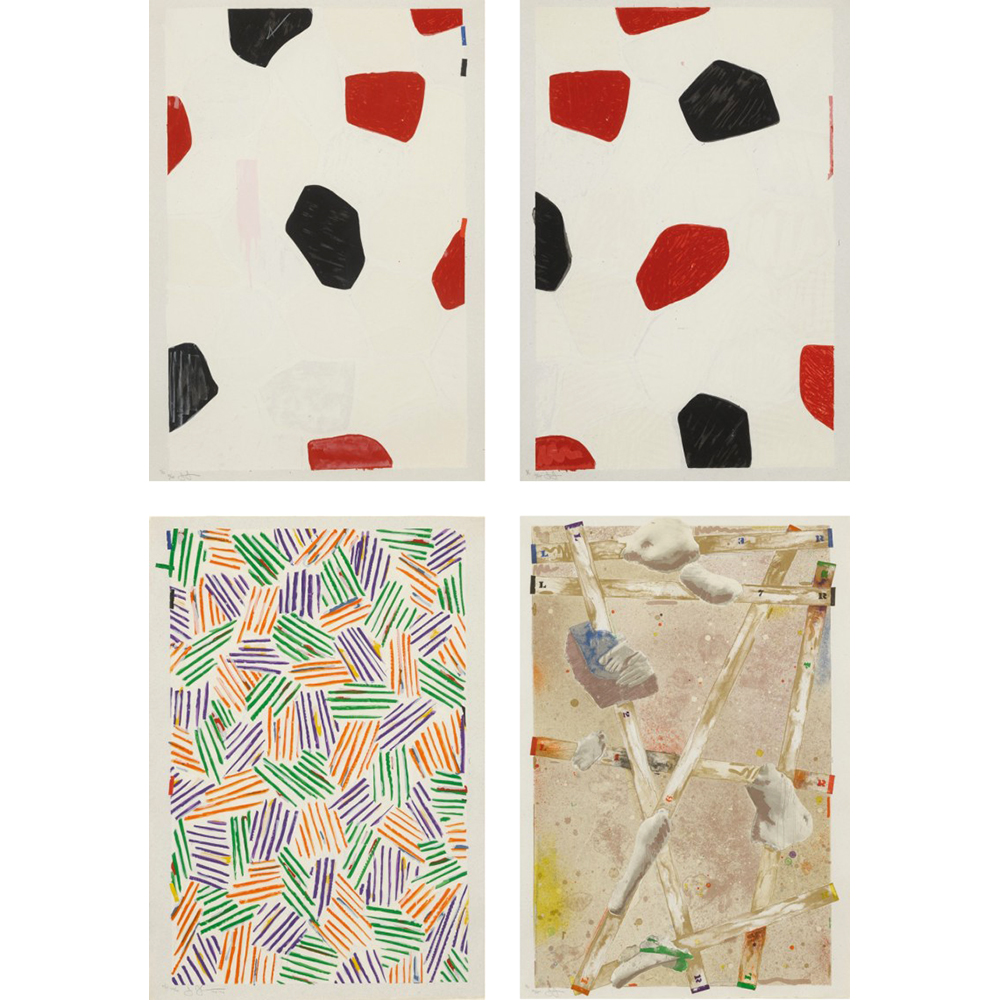Artwork Description
Jasper Johns – Four Panels from Untitled 1972 (ULAE 149)
Dimensions: 42.75 x 30″ each framed / 40.75 x 28″ each unframed
Year: 1972
Medium: four lithographs with embossing on Laurence Barker handmade paper
Edition: ed. 42/45
JASPER JOHNS b. 1930
Johns is an American painter, sculptor and printmaker whose work is associated with abstract expressionism, Neo-Dada, and pop art. He is well known for his depictions of the American flag and other US-related topics. Johns’ works regularly sell for millions of dollars at sale and auction, including a reported $110 million sale in 2010. At multiple times works by Johns have held the title of most paid for a work by a living artist.
Johns has received many honors throughout his career, including receipt of the National Medal of Arts in 1990, and the Presidential Medal of Freedom in 2011. In 2018, The New York Times called him the United States’ “foremost living artist.
The complete set of four lithographs printed in colors with embossing, 1972, each signed in pencil, inscribed ‘A/D’, ‘B/D’, ‘C/D’ and ‘D/D’ respectively and numbered 42/45 (total edition includes ten artist’s proofs), the first dated, on Laurence Barker handmade paper, with the blindstamp of the printer and publisher, Gemini G.E.L., Los Angeles, framed (4 prints)
A notoriously enigmatic artist, Johns has remained tight-lipped regarding any possible socio-political associations with his repeated depictions of flags, making any such interpretation the responsibility of the viewer. While the United States flag is a powerfully loaded symbol in the collective American consciousness and around the world, Johns’ intentions in creating these works are non-symbolic. Instead, he is concerned with their formal stylistic structure, “Because what’s interesting to me is the fact that it isn’t designed, but taken. It’s not mine.”2 As something “the mind already knows,” the motif of the flag provided Johns with a ready-made composition and allowed Johns to create meaning through other avenues, such as the physicality of his surfaces, in his process of making marks and in his choice of medium.

